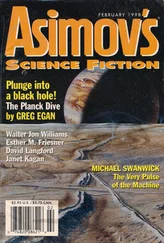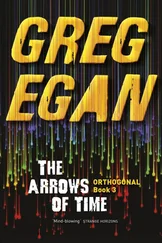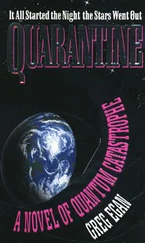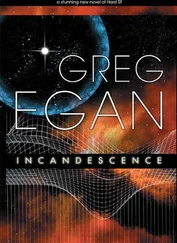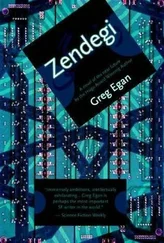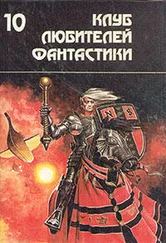Greg Egan - The Eternal Flame
Здесь есть возможность читать онлайн «Greg Egan - The Eternal Flame» весь текст электронной книги совершенно бесплатно (целиком полную версию без сокращений). В некоторых случаях можно слушать аудио, скачать через торрент в формате fb2 и присутствует краткое содержание. Жанр: Фантастика и фэнтези, на английском языке. Описание произведения, (предисловие) а так же отзывы посетителей доступны на портале библиотеки ЛибКат.
- Название:The Eternal Flame
- Автор:
- Жанр:
- Год:неизвестен
- ISBN:нет данных
- Рейтинг книги:4 / 5. Голосов: 1
-
Избранное:Добавить в избранное
- Отзывы:
-
Ваша оценка:
- 80
- 1
- 2
- 3
- 4
- 5
The Eternal Flame: краткое содержание, описание и аннотация
Предлагаем к чтению аннотацию, описание, краткое содержание или предисловие (зависит от того, что написал сам автор книги «The Eternal Flame»). Если вы не нашли необходимую информацию о книге — напишите в комментариях, мы постараемся отыскать её.
The Eternal Flame — читать онлайн бесплатно полную книгу (весь текст) целиком
Ниже представлен текст книги, разбитый по страницам. Система сохранения места последней прочитанной страницы, позволяет с удобством читать онлайн бесплатно книгу «The Eternal Flame», без необходимости каждый раз заново искать на чём Вы остановились. Поставьте закладку, и сможете в любой момент перейти на страницу, на которой закончили чтение.
Интервал:
Закладка:
Patrizia hummed with frustration. “You can multiply these waves by any number you like!” she said. “It doesn’t change their frequency, so it won’t change their energy—I mean the luxagen’s energy. Unless the wave has some energy of its own, separate from the particle’s energy, what does it actually mean if you double the size of the wave, or triple it?”
Carla was worried now. If the luxagen wave did have an energy of its own that depended on its amplitude, the discrete energy steps that were the theory’s great virtue would be erased. “What if we ignore the overall size of the wave?” she suggested. “Or better yet, we standardize the size of each solution, by some measure. Then we could still ask what it means to combine two solutions in a certain proportion. If we start with a wave with the lowest energy, and combine it with the next one, say at one part in twelve… what would that mean, physically? It can’t describe a particle with an energy lying one twelfth of the way between the two values.” That route would lead them back to continuous energies again, rendering the whole thing useless.
Patrizia spread her arms in a gesture of defeat; she’d run out of guesses.
“Part one energy, part another,” Carla muttered. “We could even have a luxagen that was part trapped in the valley, part free!”
Nothing was making sense any more. The exhilaration she’d felt when they’d found the energy levels had vanished now. Why should they take the luxagen equation seriously, if they couldn’t say what its solutions meant in all but a few special cases? If she tried to peddle this nonsense to Assunto as the answer to the stability problem, he’d have her teaching the wavelength-velocity relationship to three-year-olds for the rest of her life.
Then she heard her own words as if someone else had spoken them: Part trapped in the valley, part free. Two solutions you could combine, in any proportion. That proportion could be the missing timer—the means by which a luxagen in the tarnishing experiment kept track of how long it had been sitting in the light. Its energy couldn’t creep up over time… but the ratio between the two solutions could. The luxagen could start out as a trapped wave, but then gradually take on more and more of the free solution.
Carla didn’t know what this hunch was worth, but they had all the tools they’d need to test it. She said, “If we want to know how long it takes to get a luxagen out of the valley by blasting it with light… why don’t we just add the energy due to the light itself to the energy of the valley, and calculate exactly what that does to the luxagen wave over time?”
Patrizia quailed slightly. “That sounds like a long calculation.”
“Oh, it will be,” Carla promised her. “So before we even start, we should break for a meal.” She turned to Onesto. “Will you join us? Loaves for everyone, out of my entitlement. Let’s celebrate, replenish our strength—then start dragging some real predictions out of this equation.”
16
As she checked the link to the light recorder, Amanda leaned close to Carlo and whispered, “If this works, you should take it to the Variety Hall. They haven’t had an act that drew a crowd like this for years.”
There did seem to be about twice as many people gathered around the bench where they’d set up the signaling experiment than were usually present in the entire animal physiology workshop. Carlo didn’t know who’d invited them all, but he was feeling apprehensive enough without adding a layer of stage fright. He needed to keep both arms still or risk shifting the probes skewering his wrists, but he managed to roll his shoulders without the motion reaching below his elbows as he tried to unknot the tense flesh in his back.
Both probes had been aligned to pick up the signal to one finger of each hand. Amanda started the light recorder, then Carlo executed a sequence of moves with the chosen finger of his left hand, following the instructions on a sheet of paper clipped to the bench in front of him. Each individual action was simple enough, but they were arranged in an arbitrary progression that he could only adhere to by paying close attention, and he had deliberately refrained from any rehearsal. The eye-catching periodicity of his first, repetitive experiment had had its advantages, but this time he didn’t want his flesh to sense a pattern and pursue it on its own.
When this first stage of the performance was over, Amanda took the spool of paper out of the recorder, slipped it onto a shaft mounted on the bench, then wound the whole strip across onto another spool—the simplest way to inspect it without risking it getting tangled or damaged. To Carlo’s relief, there was a strong signal darkening the paper from start to finish; they wouldn’t need to dig around in his flesh any more to improve on it.
“Do you want to use this?” Amanda checked with him.
“Please.” Carlo wasn’t in great pain, but his body kept drawing his attention to the probes’ unnatural presence, refusing to let him feel at ease.
Amanda loaded the spool into the inverter, inspected the contact rollers for any grit or paper-fluff that could do mischief, then threaded the two leader tapes—from the recording itself, and from a second spool of unexposed light paper—together through the core of the mechanism and onto their respective receiving spools. Then she lit the lamp, closed the device, wound the spring, and engaged the drive. The spectators waited patiently as the machine whirred—better behaved than the usual crowd at any magic show.
Tosco said, “Have you checked that you’re not saturating the light paper’s response? Outside a limited range of intensities, that coating just flattens any variation in brightness.”
“We’ve checked,” Carlo replied tersely. Amanda added, “Everything’s been calibrated so it lies within a suitable exposure range. We won’t get the original light curve back, but any distortion should be comparable to the natural range of variation in the signal.” If the brain itself didn’t send out identical sequences for the same action every time, the flesh ought to be as forgiving with this artificial version as it needed to be with the biological messages it received every day.
The inverter gave a soft thud as its tension arm detected the end of the spool, halting the drive. Amanda retrieved the duplicate tape and rewound it slowly so Carlo could scrutinize it. The darkest paper in the original recording had protected the second strip from the lamplight in the inverter, allowing it to remain almost translucent, while the most translucent parts of the original—those exposed to the weakest signal from the probe—would have offered far less protection, allowing the duplicate to darken almost to opacity.
Carlo could see no sudden shifts in the tone of the paper that would indicate a surge or deficit of the sensitizing gas, and no stretches of flattened contrast that would imply that they’d saturated the coating. Light recording was a finicky art, but their experience was beginning to pay off.
“What do you think?” Amanda must have reached her own conclusion, but she kept her voice neutral. If Carlo wanted to declare the tape unusable—giving him an excuse to back out of the experiment—that was up to him.
“It’s fine,” he declared. As he spoke, he felt his left forearm twitch in dissent: a needle of hardstone driven through his wrist wasn’t fine at all, and every scrag of his flesh knew that there was a stranger incursion yet to come.
Amanda loaded the duplicate tape into the light player, running the leader through onto the receiving spool. She gently tugged the connecting arm from the left-hand probe out of its socket in the light recorder and swung it around toward the new machine. When it was in place, there was one more adjustment to make: she reached down and took hold of the probe itself, and turned the ring attached to the mirror at the bottom of the needle. Before, it had faced back up along his arm, to catch some of the light arriving from his brain. Now it was angled toward that light’s destination, down the motor pathway into his hand.
Читать дальшеИнтервал:
Закладка:
Похожие книги на «The Eternal Flame»
Представляем Вашему вниманию похожие книги на «The Eternal Flame» списком для выбора. Мы отобрали схожую по названию и смыслу литературу в надежде предоставить читателям больше вариантов отыскать новые, интересные, ещё непрочитанные произведения.
Обсуждение, отзывы о книге «The Eternal Flame» и просто собственные мнения читателей. Оставьте ваши комментарии, напишите, что Вы думаете о произведении, его смысле или главных героях. Укажите что конкретно понравилось, а что нет, и почему Вы так считаете.

